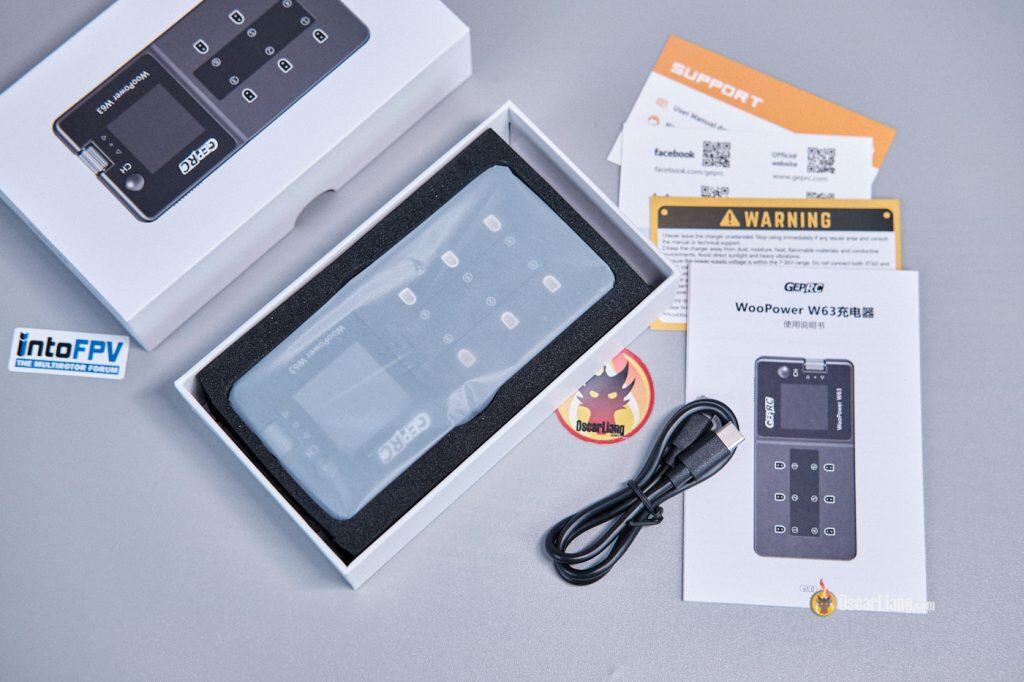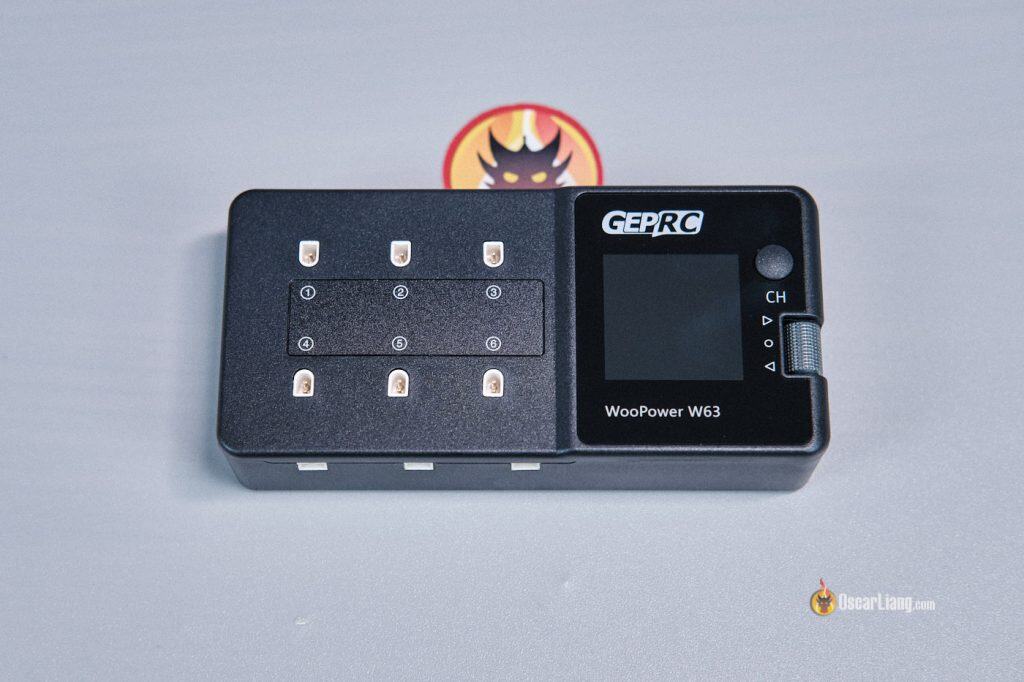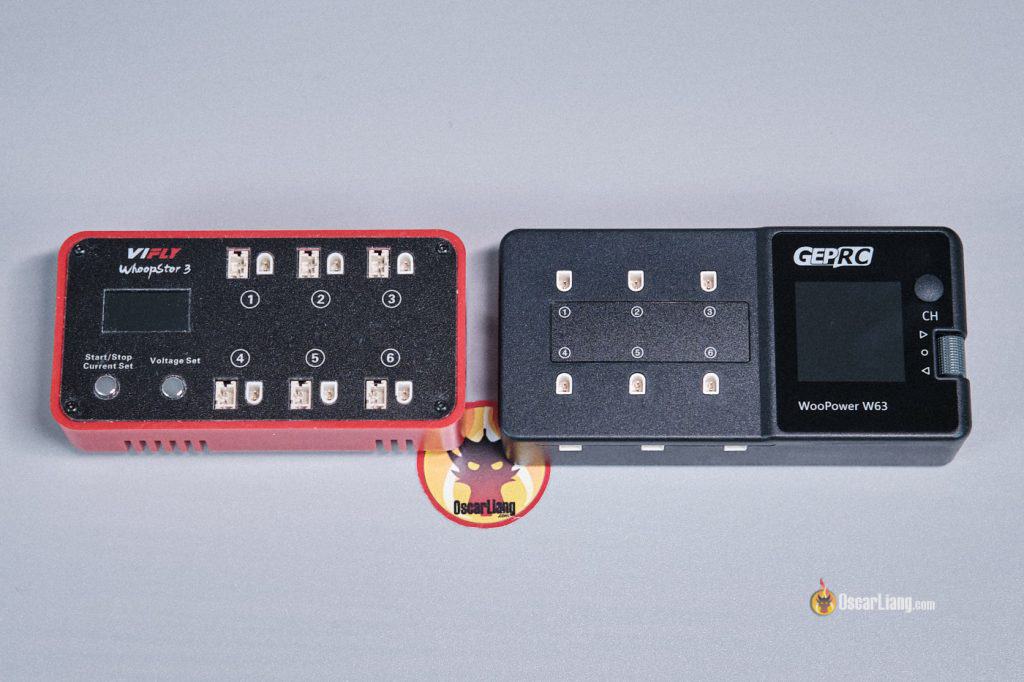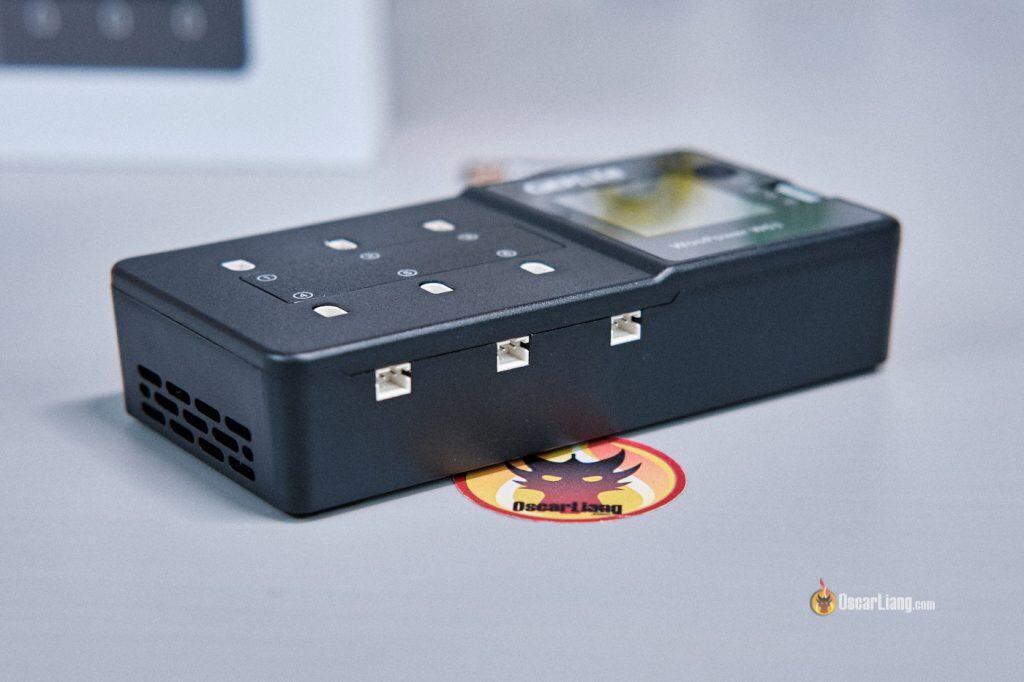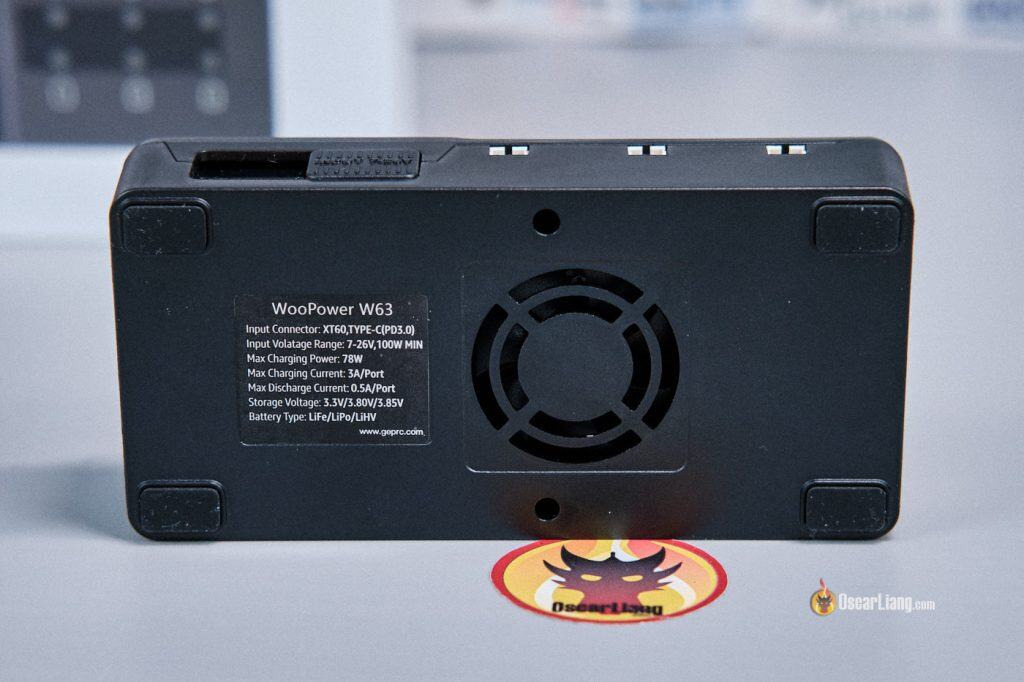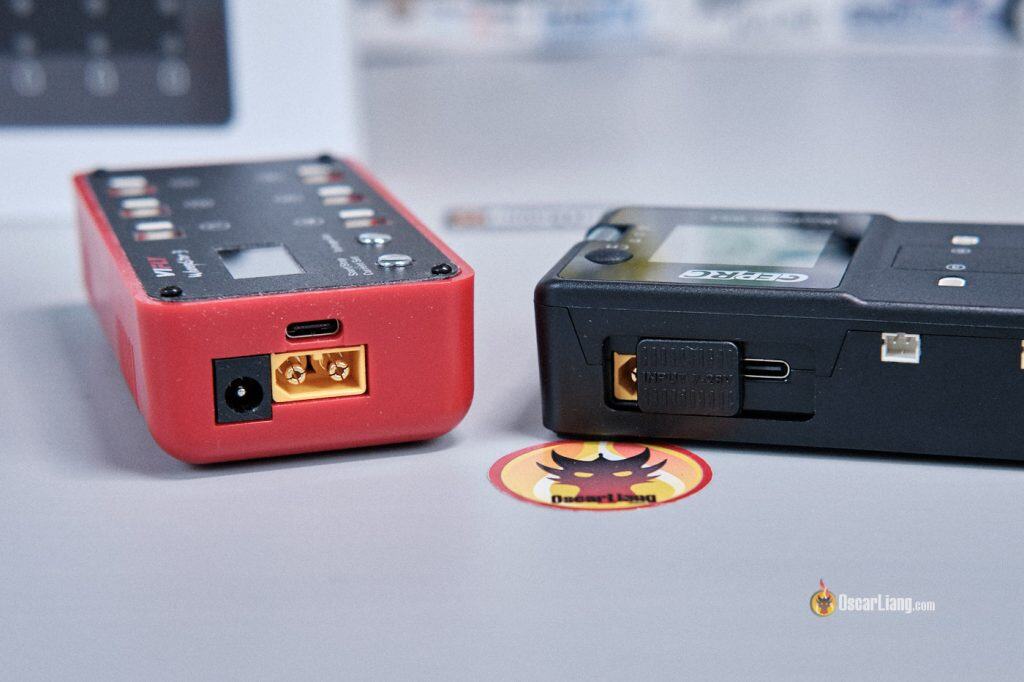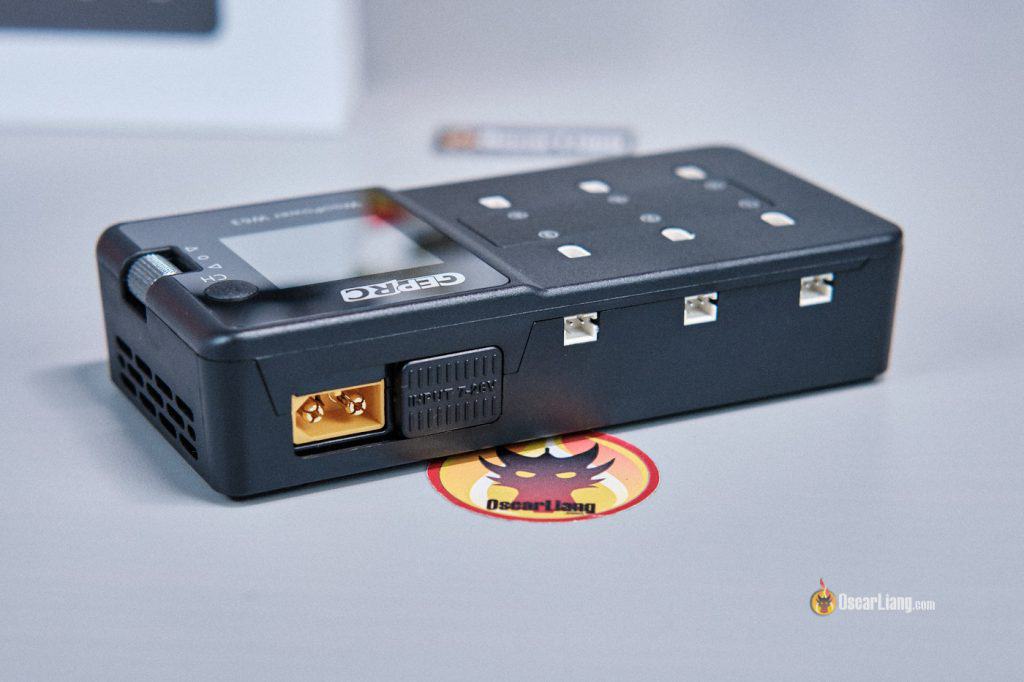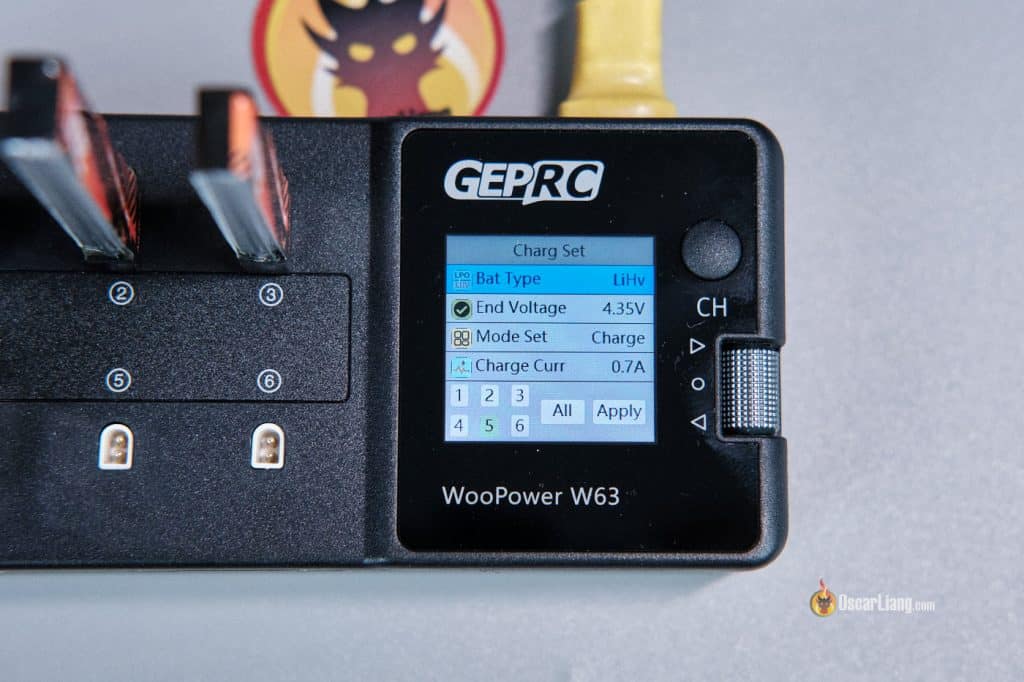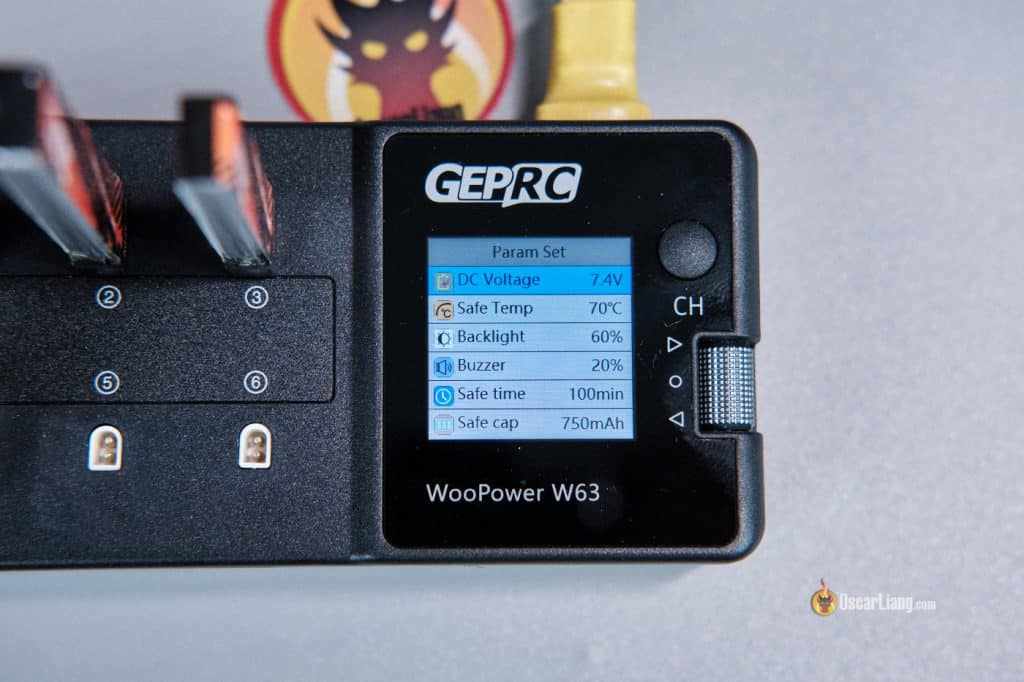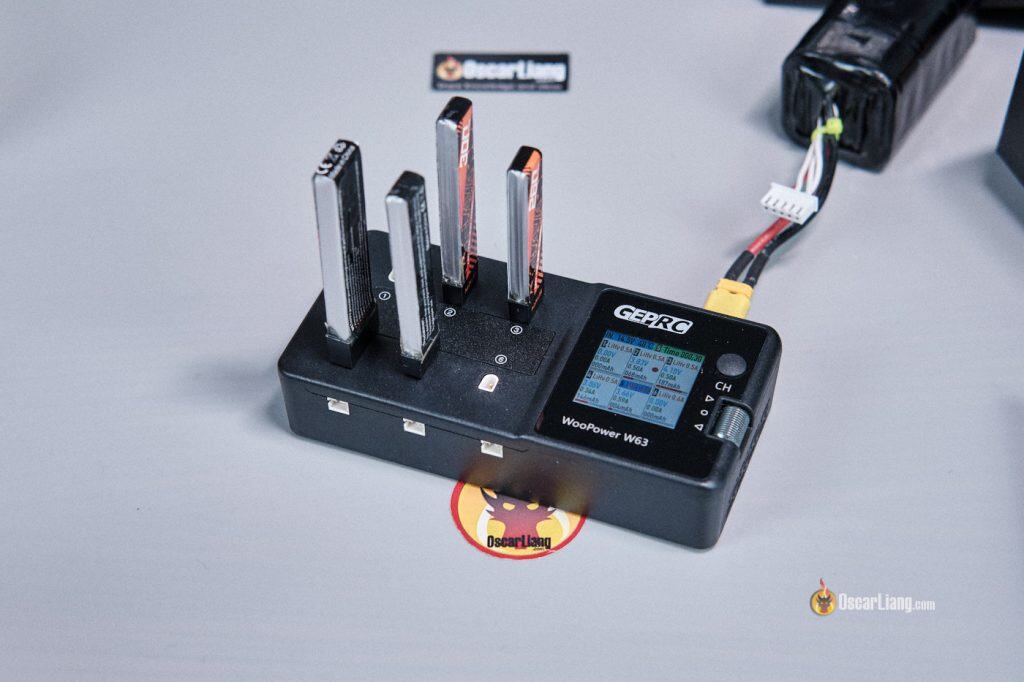When I saw the release of the GEPRC WooPower W63 1S Charger, I was immediately intrigued by the specs and knew I had to buy one to test. Spoiler: I’m impressed—and I believe this could be the new king of 1S whoop battery chargers in 2025! With powerful and flexible performance, the WooPower offers six independent charging ports, each capable of charging up to 3A. You can simultaneously charge, discharge, or storage-charge up to six 1S batteries, making it extremely convenient and efficient. In this review, I’ll compare the WooPower to the popular Vifly Whoopstor V3, evaluate how well it performs, and show you how it works.
Check out my buyer’s guide on Tiny Whoops, related components and accessories: https://oscarliang.com/best-tiny-whoop/
Where to Buy
Get the GEPRC WooPower Charger from:
In the box:
- WooPower Charger x1
- USB-C to USB-C Cable x1
- User Manual x1
Specifications
- Input Power Connectors: XT60 / USB Type-C (PD 3.0)
- Input Voltage Range: 7–26V (2S to 6S)
- Minimum Input Power: 100W (for full load)
- Screen: 1.54-inch IPS display, 240×240 resolution
- Output Connectors: 6 independent ports, each with PH2.0 and BT2.0 (A30 compatible)
- Max Output Power: 78W
- Max Charging Current: 3.0A per port
- Max Discharging Current: 0.5A per port
- Operating Temperature: 0°C–75°C
- Supported Battery Types: 1S LiPo / LiHV / LiFe
- Functions: Charge / Discharge / Storage
- Dimensions: 125 x 61 x 28 mm
- Weight: 160g
Design
The Vifly Whoopstor V3 has been my go-to 1S charger for the past two years—can the GEPRC WooPower finally dethrone it? Let’s break it down.
At 160g, the WooPower is slightly larger and heavier than the Whoopstor V3 (142g), but this difference is negligible. Both are compact and travel-friendly, easily fitting into a gear bag for field use.
Like the Whoopstor, the WooPower also has 6 charging ports, each featuring PH2.0 and BT2.0 connectors (also compatible with A30 batteries).
Where the WooPower shines is its larger screen, which allows it to display more information at once.
That said, the build quality of the Whoopstor feels a bit more solid and durable. The WooPower uses slightly cheaper and thinner plastic, but unless you plan to be rough with it, this shouldn’t be a dealbreaker.
One possible issue with the WooPower is the cooling fan placement—it’s located on the bottom of the charger. This doesn’t leave much room for airflow when it’s sitting flat on a surface. If you plan to charge at higher currents, consider placing it on its side to improve airflow. GEPRC should consider relocating the fan to the side, similar to the Whoopstor’s design.
Charging Capabilities
The WooPower boasts an impressive 3A charging current per port, while the Whoopstor V3 is limited to 1.3A. In practical terms, 1.3A is already more than sufficient for most tiny whoop batteries—such as 1S 300mAh, 450mAh, or even 550mAh.
If you want to prolong the life of your LiPo batteries, charging at 1C (i.e., charging at a current equal to the battery’s capacity) is generally recommended. That means:
- 300mAh → 0.3A
- 450mAh → 0.45A
- 550mAh → 0.55A
So while 3A per port is impressive, it may be overkill for most users. That said, if you’re in a rush and choose to charge at higher current, make sure to closely monitor battery temperatures to avoid overheating or fire risk.
Independent Charging Ports
One major advantage of the WooPower over the Whoopstor V3 is its independent charging ports. On the Whoopstor, charger settings apply globally to all six ports. In contrast, the WooPower allows you to set different parameters per port—making it much more flexible.
For example, you can:
- Charge 4 batteries at different currents
- Discharge a battery
- Put another into storage charge
All at the same time.
This level of control is a huge benefit when managing batteries of different sizes or types, or when flying multiple quads with different battery requirements.
Power Input Options
The WooPower can be powered via USB-C (PD 3.0) or an XT60 connector. It does not support 5521 barrel jack input like the Whoopstor, but this likely won’t be an issue for most users, as USB-C and XT60 are more common connectors.
Because the WooPower supports higher charging currents, it also requires a higher wattage power source to run at full capability:
- ViFly Whoopstor V3: 40W
- GEPRC WooPower W63: 100W
That said, you can still use the WooPower with a lower wattage power supply—just reduce the charging current accordingly.
There are several ways you can power the charger, include:
- PD power adapter via USB-C
- Bench power supply (e.g., ToolkitRC P200)
- Modern LiPo chargers with DC output feature (12V–24V via XT60)
- 4S or 6S LiPo battery for portable field charging
Additional Features
GEPRC included a number of thoughtful features:
- Charged/discharged mAh display – you know exactly how many mAh has been put into the packs, or discharged.
- Input voltage warning – If you’re powering the charger with a battery, it will stop charging and alert you when the input voltage drops below your set threshold. This helps prevent over-discharging your power source.
- Safety parameters – You can set limits for charging time, total capacity, and temperature. This is especially important when charging at higher currents, helping to prevent charger overheating or damage.
How to Use
When it comes to charging, the WooPower is straightforward: simply plug in your battery, and charging starts automatically. Unfortunately, there’s no button to pause or stop charging—it will only stop when the battery is fully charged or if you unplug it manually.
If you want to change charging settings, you must do so before plugging in the battery. Use the scroll wheel to select the port you want to configure, then press it to enter the charging settings menu. Navigation is easy with the scroll wheel.
You can customize:
- Battery type
- Charging mode (Charge, Discharge, Storage)
- Current per port
You can also adjust the end voltage:
- For LiPo, from 4.20V to 4.25V
- For LiHV, only up to 4.35V
In discharge mode:
- Minimum end voltage for LiPo: 3.40V
- Minimum for LiHV: 3.50V
You can apply the same settings to multiple ports, saving time and effort when managing several batteries.
In the System Settings menu (hold down the CH button), you can adjust settings like:
- Display brightness
- Beeper volume
- Input voltage warning
- Language
These options are similar to those on a full-featured smart charger.
Testing
Input Voltage Measurements
| Voltage (V) | |
| Multimeter | 15.03 |
| Charger | 15.0 |
Port Voltage Measurements
| Voltage (V) | |
| Multimeter | 3.816 |
| Charger Port #1 | 3.82 |
| Charger Port #2 | 3.81 |
| Charger Port #3 | 3.81 |
| Charger Port #4 | 3.82 |
| Charger Port #5 | 3.81 |
| Charger Port #6 | 3.81 |
End Voltage When Charging Complete
| LiPo (4.20V) | LiHV (4.35V) | |
| Multimeter | 4.182 | 4.318 |
End Voltage When Discharging Complete
| LiPo (3.40V) | LiHV (3.50V) | |
| Multimeter | 3.440 | 3.489 |
End Voltage When Storage Charged Complete
| Battery 1 (3.85V) | Battery 2 (3.85V) | |
| Multimeter | 3.826 | 3.817 |
mAh Reporting Accuracy (Charged from 3.2V to 4.35V)
| 1S 260mAh LiHV | 1S 300mAh LiHV | |
| Charger | 267 | 314 |
The testing reveals a very small discrepancy in voltage readings between the charger and my digital multimeter. However, it’s minor and not a concern for hobby use. The charger also tends to slightly undercharge batteries, which is not necessary a bad thing, as it’s safer than overcharging. It’s very close to the target voltage anyway.
As for mAh reporting, the readings tend to be overestimated by about 3% to 4%, not ideal and I wish there is a way to calibrate it.
Downsides
Discharging is quite slow – Only goes up to 0.4A per port, not 0.5A as claimed in the specs.
Furthermore, the discharge doesn’t seem to work when batteries are at full charge (i.e. 4.35V). I had to discharge the battery slightly below 4.35V with a quad before the charger begins discharging. This could be a bug.
Final Thoughts and Recommendations
Both the ViFly Whoopstor V3 and the GEPRC WooPower W63 are excellent 1S battery chargers. However, the WooPower W63 has now replaced the Whoopstor V3 as my go-to 1S charger. It’s more powerful, flexible, and includes advanced features like:
- Individually controllable ports
- Safety features like input voltage, charging time and temperature warnings
- mAh tracking
All of this, at a price point comparable to the Whoopstor, makes it a standout option in 2025.
That said, if you already own a Whoopstor V3 and are satisfied with it, there’s no urgent need to switch. It’s still a solid, reliable charger, especially if you primarily charge one type of battery.
However, if you’re in the market for a new 1S charger, or you want more control and convenience, the WooPower W63 is absolutely my top choice.




